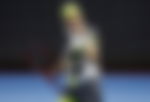
via Reuters
Tennis – ATP 500 – St Petersburg Open – St Petersburg, Russia – Canada’s Denis Shapovalov in action during his quarter final match against Switzerland’s Stan Wawrinka REUTERS/Anton Vaganov

via Reuters
Tennis – ATP 500 – St Petersburg Open – St Petersburg, Russia – Canada’s Denis Shapovalov in action during his quarter final match against Switzerland’s Stan Wawrinka REUTERS/Anton Vaganov
Canadian tennis star Denis Shapovalov has given his fans an insight into the body movements and skill that goes into executing his trademark one-handed jump backhand.
Denis Shapovalov breaks down trademark shot into five parts
In a masterclass video, the 12th-ranked Canadian broke down his shot into five parts – recognition, space, footwork, take-back, and timing.
ADVERTISEMENT
Article continues below this ad
The shot you wish you had 🤤
Learn how to hit a one-handed backhand like @denis_shapo! ⬇️
— ATP Tour (@atptour) December 11, 2020
The one-handed backhand has been a percentage shot for Shapovalov. It has fetched him points galore. The power and precision that it packs has made it virtually unreturnable for opponents.
Apart from its effectiveness, the grace, poise, and style with which Shapovalov delivers his one-handed backhand makes him arguably the best modern-day exponent of this shot.
Denis Shapovalov shows trigger movements into his one-handed jump backhand
The video captures, in slow motion, how the Canadian winds up for the one-handed backhand and delivers it with a perfectly timed jump.
He said the first step to executing this shot is, “recognizing the right ball and figuring out your core positioning.”
He said, ideally, a return that grips the surface and comes slowly onto him helps in meeting the ball with his jump and delivering his one-handed backhand with deadly precision.

via Reuters
Tennis – ATP 500 – St Petersburg Open – St Petersburg, Russia – Canada’s Denis Shapovalov reacts during his quarter final match against Switzerland’s Stan Wawrinka REUTERS/Anton Vaganov
What adds to the shot’s effectiveness is the momentum that he lends into it with his jump and the speed of the racquet as it meets the ball.
He said balls coming faster at him gives him less time to gather his feet and jump.
“It’s just too tough to get the feet around it,” Shapovalov explained.
Shapovalov credits a slow return for the one-handed jump backhand
“Normally, I’m looking for slower, high ball, might be a shank off an opponent’s racquet or just, kind of, slower inside the court so I can step in while I’m hitting the shot,” the Canadian says in the video.
Demonstrating the second step to executing the shot, he said it’s about giving himself more space to get behind the ball and putting a good bit of force and momentum into the shot.
“Have enough time to go forward and jump into the shot. You don’t wanna be too close to it, you wanna have enough room to work with it and jump into the ball as you’re hitting it,” Shapovalov explains.
Read More: “My level is there”: Denis Shapovalov on Competing Against Top-Ten Players
He said step-3 is about “comfortable with the footwork”. Explaining the drill, he says the movement involves jumping on one foot, swinging, and then landing on the same foot.
Take-back and timing lends final flourish into shot, says Shapovalov
Speaking about Step-4, the take-back, Shapovalov said, “when I jump into the back-hand, I need to have a lot of space, I like to prep for it early, but I still take back more as I’m jumping in the air.”
ADVERTISEMENT
Article continues below this ad
“So I want to ensure that I have a lot of space between me and the ball.”
ADVERTISEMENT
Article continues below this ad
He said the likes of Roger Federer and Grigor Dimitrov have comparatively lesser take-backs on their one-handed backhands.
Explaining the final step, the Canadian says, “You wanna get used to the timing”. He then sets his racquet down and demonstrates how he does the drill with his hands to familiarize himself with the trigger movements that go into the shot.
ADVERTISEMENT
ADVERTISEMENT
ADVERTISEMENT
ADVERTISEMENT

